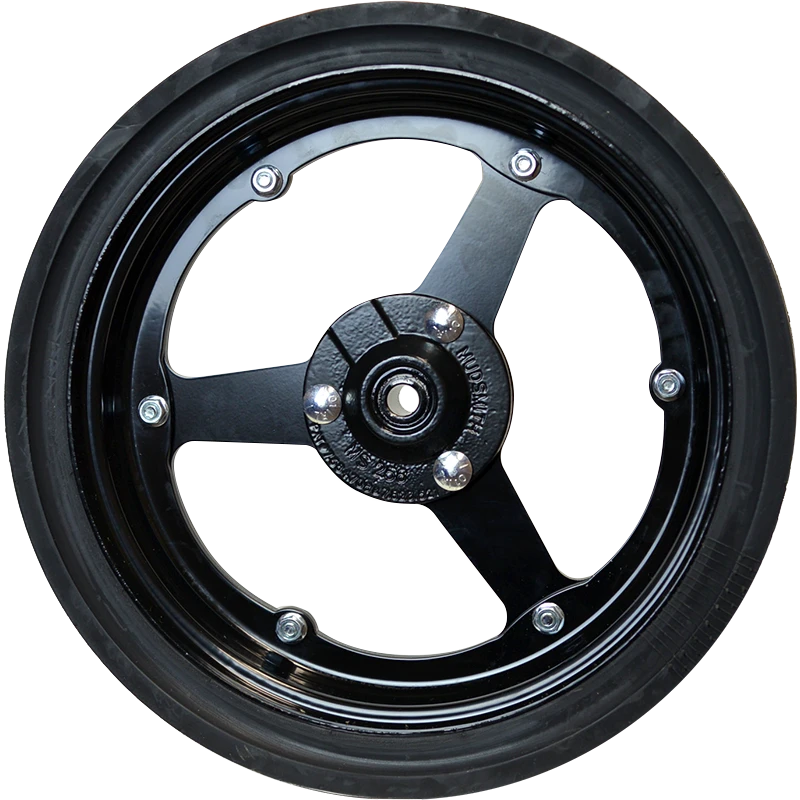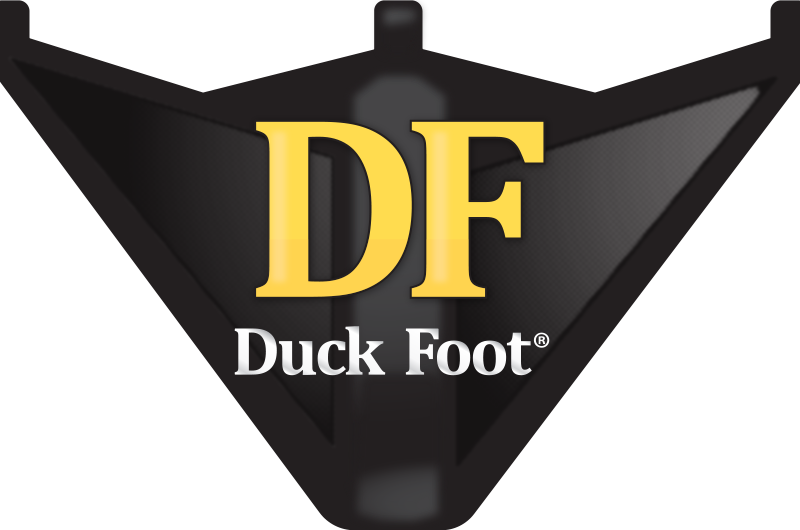Agriculture and Farm Equipment Blog!
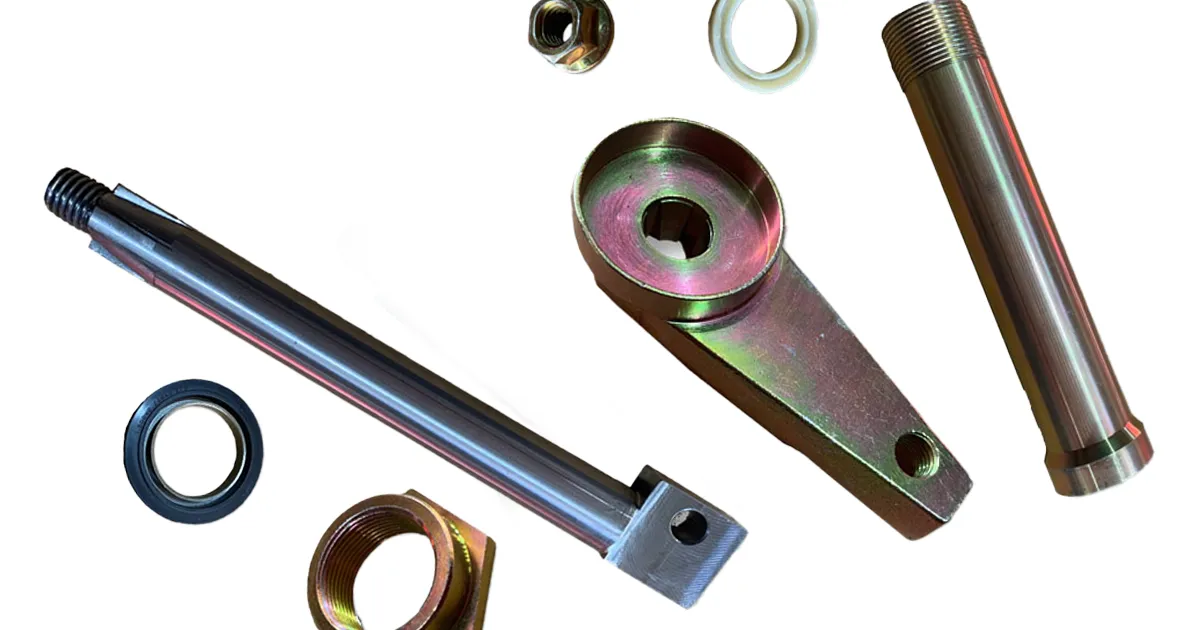
The Hidden Costs of Greasable Parts: Why Switching to Non-Greasable Saves in the Long Run
Let’s be honest—no one wakes up excited to grease equipment. It’s messy, time-consuming, and always seems to get bumped down the list when harvest is on, cows are out, or the weather just won’t cooperate. But here’s the kicker: while greasing might seem like a small task, those “little” maintenance jobs can really add up over time—both in labor and cost.
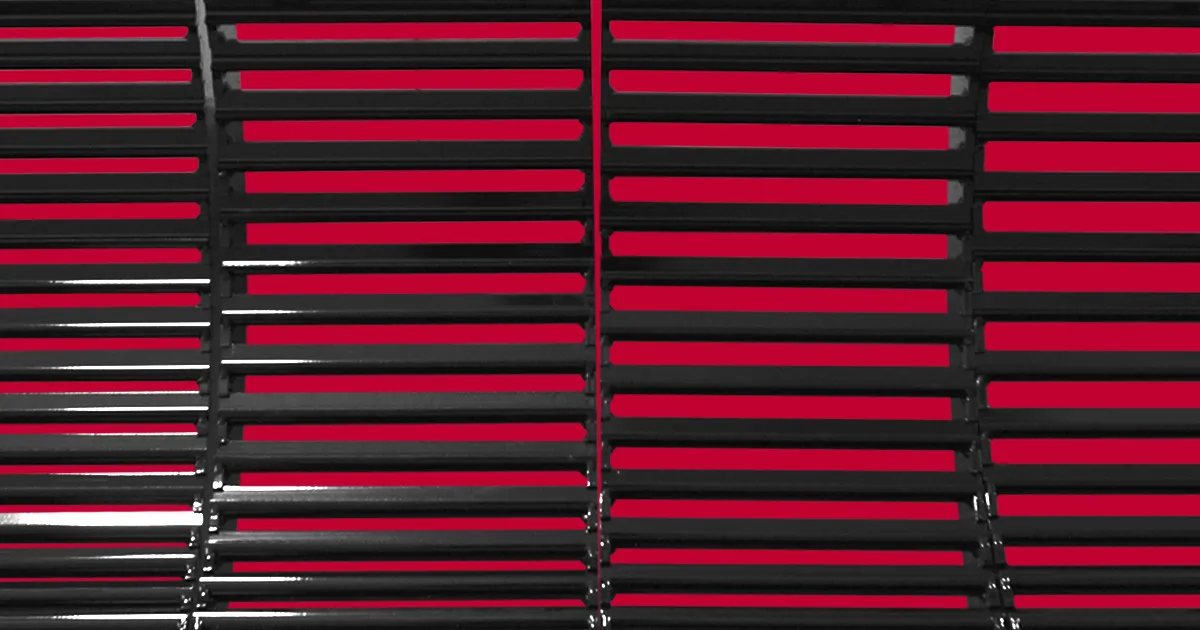
How Does the Variable Spacing on the Razors Edge Concaves Work?
When you’re pushing your combine hard during harvest, efficiency is everything. The Razors Edge Concaves by Thunderstruck Ag Equipment offer a smart solution to boost your threshing performance through variable spacing technology. This innovative feature plays a key role in optimizing how well your combine separates crops, delivering better results with less effort. Let’s explore how the variable spacing system works and why it matters for your harvest.
» Read more about: How Does the Variable Spacing on the Razors Edge Concaves Work? »
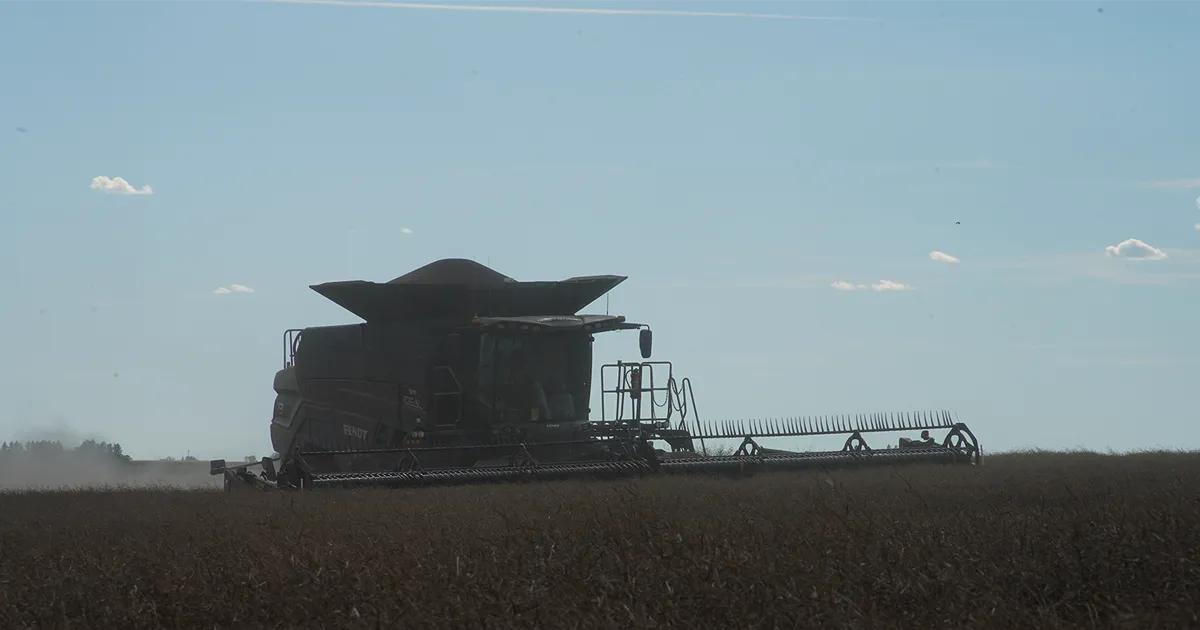
Thunderstruck Ag Unveils Razors Edge Concaves, Redefining Harvest Efficiency Across Every Acre

Built with farmers’ toughest pain points in mind, Razors Edge Concaves mark a turning point in how threshing systems perform under pressure.

Frontline Business Insights: Jeremy Matuszewski of Thunderstruck Ag

Jeremy Matuszewski is the CEO and founder of Thunderstruck Ag, where he helps farmer-invented products reach global markets. A marketing strategist with over 20 years in sales and marketing, Jeremy specializes in bringing innovative, real-world solutions to competitive industries. Raised blue collar, he pairs grit with creativity to drive results and empower the agricultural community.
» Read more about: Frontline Business Insights: Jeremy Matuszewski of Thunderstruck Ag »
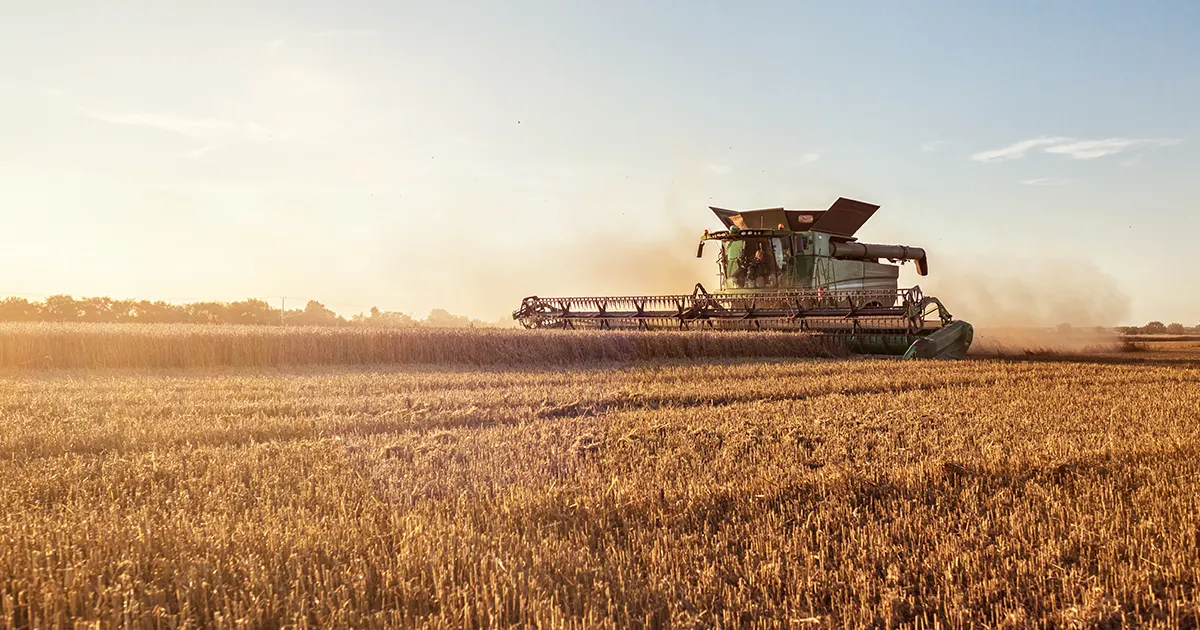
It’s a good question—and one we hear often: “If the i-paddock Typhoon doesn’t have a reversing clutch, how do I back it out when it plugs?”
The answer? You reverse it just like you would any OEM header drum—using your combine’s standard reversing procedure. No special tools, no unique setup. It’s that simple.
» Read more about: How Do You Reverse the Typhoon Without a Reversing Clutch? »
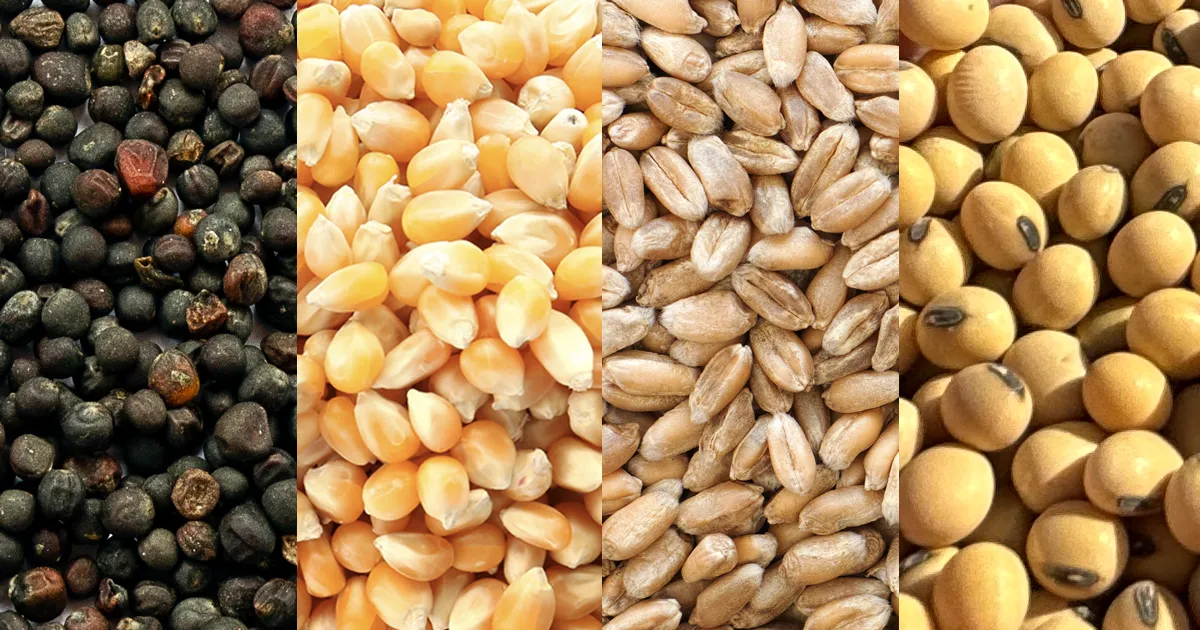
Multi-Crop Harvesting Made Easy: The Concave That Does It All
If you’re harvesting multiple crops in a season, you know the drill: what works great in wheat might struggle in soybeans. What flows clean in canola could plug up in corn. Every crop change usually means climbing into the machine to swap cover plates, change settings, or wrestle with worn components.
But what if you didn’t have to?
» Read more about: Multi-Crop Harvesting Made Easy: The Concave That Does It All »

Residue management might not be the flashiest part of your drill setup, but when it’s not doing its job, it shows up fast. Whether it’s plugging, poor seed placement, or uneven emergence, the wrong residue manager can cost you in both yield and time.
» Read more about: Side-by-Side: Comparing the Top Residue Managers for John Deere Drills »

How Long Will Duck Foot Paddle Tines Actually Last?
It’s one of the first questions farmers ask before making a change: “How many acres am I going to get out of these?”
Fair question. When you’re investing in a product like Duck Foot Paddle Tines, you’re not just looking for a better harvest—you’re looking for something that’ll hold up, season after season, without needing to be constantly replaced.
Here’s the honest answer: more than 35,000 acres. And we’re not talking about babied,
» Read more about: How Long Will Duck Foot Paddle Tines Actually Last? »

The Real Cost of Grain Loss: Why Upgrading Your Concaves Pays Off
There’s a lot going on in the cab at harvest—monitoring yield, watching your ground speed, trying to beat the forecast. So when it comes to grain loss, it’s easy to rely on what the monitor says or assume what’s coming out the back is “normal.”
But here’s the thing: even a small amount of loss at the rotor or sieves adds up fast. And unless you’ve checked it with a pan, you might be leaving real money in the field without realizing it.
» Read more about: The Real Cost of Grain Loss: Why Upgrading Your Concaves Pays Off »

Why Am I Still Throwing Grain Out the Back? And What Do I Need to Change with My New Concaves?
If you’ve just upgraded to a set of Razors Edge Concaves, you’re already on the path to better threshing and reduced rotor loss. But if you’re still seeing grain hit the ground behind your combine, you’re not alone—and it doesn’t mean the concaves aren’t working. It usually means a few key settings need to be adjusted to match the new hardware.

If there’s one thing a farmer doesn’t want to see during planting season, it’s hairpinning. You’ve done all the prep, conditions seem right, but then that trash gets pushed into the furrow instead of being cleared—and suddenly you’re dealing with poor seed-to-soil contact, uneven emergence, and lost yield potential.
It’s frustrating. It’s avoidable. And that’s where the Aricks Residue Manager comes in.
» Read more about: Preventing Hairpinning: How the Aricks Residue Manager Stands Out »

“Do I Need Cover Plates for Tougher Crops?” Everything You Need to Know
One of the most common questions we hear from farmers is, “Do I need cover plates for tougher crops?” It’s a valid concern—traditional concaves often require cover plates to handle high-moisture corn, densely packed wheat, or other challenging conditions. But with Razors Edge Concaves, the answer is simple: No, you don’t.
» Read more about: “Do I Need Cover Plates for Tougher Crops?” Everything You Need to Know »

Cracks and Splits in Soybeans? Your Concave Could Be the Problem
If you’re noticing cracks and splits in your soybeans or edible beans, it’s time to take a closer look at your concave. While aggressive threshing might be effective for tougher crops like corn or wheat, it can be a major issue for delicate beans. The excessive force can damage the seed coat or split the beans entirely, leading to dockage at the elevator and cutting into your profits. Fortunately, Razors Edge Concaves offer a solution that protects your crop quality while maintaining harvest efficiency.
» Read more about: Cracks and Splits in Soybeans? Your Concave Could Be the Problem »

Let’s talk about the part of your harvest that might be holding you back.
If you’re dealing with uneven crop flow,, or frustrating blockages at the front of your header, you’re not alone. A lot of farmers wrestle with feeding issues—especially in bulky crops, short crops, or tough conditions. The good news? There’s a simple upgrade that can make a big difference.
» Read more about: How Can I Improve the Feeding of My Header? »

If you’re tired of spending valuable hours under your air seeder with a grease gun, this one’s for you.
Upgrading to Aricks Non-Greasable Bush Kits is one of those changes that seems small… until you experience just how much time, frustration, and wear it saves. Let’s break down why these bush kits are quickly becoming a no-brainer upgrade for farmers who want durability without the daily hassle.
» Read more about: Are Non-Greasable Bush Kits Worth It for Air Seeders? »
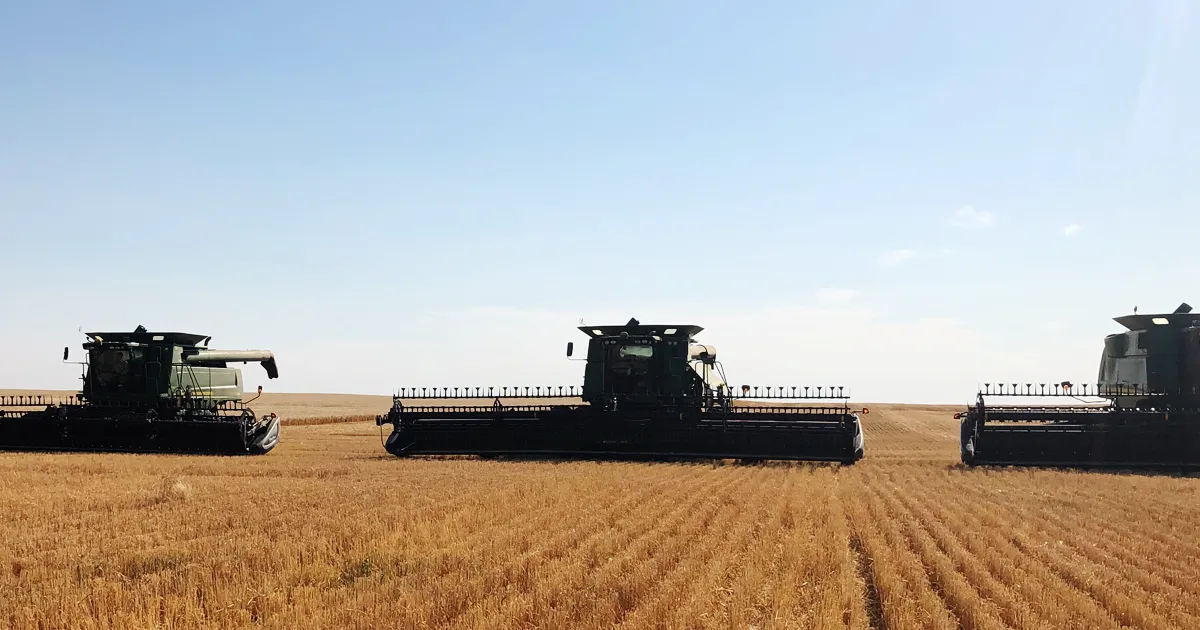
Why can’t I just use a couple Duck Foot Paddles?
It’s Like Running Half a Header
Imagine buying a new header, then only bolting on half the tines. Sounds a little crazy, right? That’s basically what happens when you try to run just a few Duck Foot Paddle Tines instead of installing a full set. You’re not giving the crop the even, consistent feed it needs across the entire header. And that inconsistency? It shows up fast.
» Read more about: Why can’t I just use a couple Duck Foot Paddles? »

Tired of Changing Concaves Mid-Season? Here’s the Solution
Ask any farmer who runs multiple crops through the same combine and you’ll hear it:
“I’m tired of swapping concaves.”
Whether it’s trying to get the settings just right for wheat after coming out of canola, or wrestling a set of cover plates to make soybeans clean up right after corn, the mid-season concave shuffle eats time, patience, and too often—profit.
» Read more about: Tired of Changing Concaves Mid-Season? Here’s the Solution »

Lip Wear is Killing Your Gauge Wheels—Here’s How to Stop It
If you’ve ever dealt with worn-out gauge wheels, you know how frustrating it can be. One season they’re working fine, and the next, they’re barely holding up. The culprit? Premature lip wear. When the lip on your gauge wheel wears down too quickly, it directly impacts your planter’s performance—leading to uneven seed depth, poor seed-to-soil contact, and ultimately, lower yields. But why does it happen, and more importantly, how can you stop it?
» Read more about: Lip Wear is Killing Your Gauge Wheels—Here’s How to Stop It »

How Thunderstruck Ag Is Giving Farmer-Invented Tools the Spotlight They Deserve

Long before he became the Emerging Innovator of the Year 2025 awardee, Jeremy Matuszewski spent 12 years rattling around North America’s roads selling farm equipment. Those miles exposed a stubborn paradox of farm shops brimming with clever farmer-invented parts, yet a lot of them never reach beyond a county line. Meanwhile, the farmer’s cost side of the ledger was growing brutal. According to the latest USDA figures, fertilizer alone has absorbed as much as 44% of the operating budget for corn and wheat growers since 2020.
» Read more about: How Thunderstruck Ag Is Giving Farmer-Invented Tools the Spotlight They Deserve »

When it comes to planters and drills, we all tend to focus on the “big stuff” — openers, gauge wheels, seed boots. But often, it’s the small parts that quietly cause the biggest headaches. Case in point: your cover plates and T-handles.
» Read more about: Why Your Seeder’s Losing Depth (and How to Fix It Fast) »

You’re Losing Bushels — And You Don’t Even Know It
You’ve got the combine humming. The hopper’s filling fast. The grain cart is chasing you down the field, and the weather’s finally cooperating. Everything looks like it’s going right.
But there’s one big problem: You could be leaving money on the ground — and not even realize it.
» Read more about: You’re Losing Bushels — And You Don’t Even Know It »

Martin-Till 1360 Floating Row Cleaner Specifications: Your Complete Guide
The Martin-Till 1360 Floating Row Cleaner is a game-changer for farmers seeking efficient residue management and superior planting performance. Built for durability and versatility, this row cleaner is a trusted solution for producers who need reliable tools to handle heavy residue and varying field conditions. In this article, we’ll explore the key specifications, features, and benefits of the Martin-Till 1360 Floating Row Cleaner to help you determine if it’s the right fit for your operation.
» Read more about: Martin-Till 1360 Floating Row Cleaner Specifications: Your Complete Guide »

Do Your Seed Firmers Hold Up Over Time?
Why Consistent Firming Pressure Makes All the Difference
When it comes to planting, the difference between having a bumper crop or having a disappointing yield often comes down to one thing: consistent seed-to-soil contact. And while many seed firmers may seem similar at first, the real difference shows up after a few hundred acres.
» Read more about: Do Your Seed Firmers Hold Up Over Time? »

True Singulation Matters: Get It Right for Crops Like Canola and Sesame
When you’re planting small seeds like canola or sesame, even spacing isn’t just nice to have—it’s everything. The trouble is, most seed disks out there just aren’t made for the job. They’re built for more general crops, and that can lead to skips, doubles, and uneven emergence that cost you yield before the season even gets going.
That’s where the RRV Seed Disk comes in.
» Read more about: True Singulation Matters: Get It Right for Crops Like Canola and Sesame »

Martin-Till Weight Transfer System Installation Guide: Step-by-Step Instructions
The Martin-Till Weight Transfer System is an essential tool for ensuring proper weight distribution across planters, enhancing performance and reducing wear on equipment. This guide will walk you through the step-by-step installation process and provide tips for optimal usage.

How Uneven Sieve Loads Lead to Sieve Loss—And How to Fix It
If you’ve ever watched good grain go out the back of your combine, you know how frustrating sieve loss can be. But did you know that uneven sieve loads are often the root cause? When crop loads aren’t distributed evenly across the sieve, separation efficiency takes a hit, and valuable grain is lost. There’s a way to fix it.
» Read more about: How Uneven Sieve Loads Lead to Sieve Loss—And How to Fix It »

Let’s talk about something every farmer knows all too well—greasing.
It’s one of those necessary evils. Before the drill hits the field each week, you’re under the rows with the grease gun, giving each gauge wheel axle its dose. You know it keeps things running smooth and prevents early wear, but let’s be honest—it’s tedious. And if you’ve got a big drill planter, it eats up a chunk of time you could be using planting.
» Read more about: Cut Weekly Maintenance: How Non-Greaseable Gauge Wheel Axles Save Time & Money »

Don’t Settle for Less: Why Razors Edge Outperforms Estes XPR3 Concaves
Not all “all-crop” concaves are created equal. And when you’re in the middle of harvest, the difference between good enough and outstanding can be measured in lost bushels, missed hours, and dollars out of your pocket.
Both Estes XPR3 and Razors Edge Concaves claim to eliminate the need for cover plates, or mid-season swapping. But if you’re looking for the most complete, high-capacity, loss-reducing solution on the market — Razor’s Edge stands in a league of its own.
» Read more about: Don’t Settle for Less: Why Razors Edge Outperforms Estes XPR3 Concaves »

Thunderstruck’s Razors Edge Concaves

Founded in 2013, Thunderstruck Ag is a Canadian business that specializes in supplying cutting-edge agricultural solutions and equipment. The business began with a desire to sell unique products and soon integrated itself into the agricultural community, specifically targeting products designed by farmers for farmers.

The Truth About Premature Wear in Seed Firmers (And How to Prevent It)
If you’re noticing uneven emergence, inconsistent seed depth, or gaps in your stand, your seed firmer might be the culprit. Traditional seed firmers wear out quickly, losing the ability to maintain proper pressure and seed placement. Over time, this results in lost yield potential and higher replacement costs.
» Read more about: The Truth About Premature Wear in Seed Firmers (And How to Prevent It) »

Martin-Till fCrusher Closing Wheel Benefits: How It Enhances Your Planting
The Martin-Till fCrusher Closing Wheel is an essential tool for achieving optimal seed trench closure and ensuring uniform crop emergence. Engineered for both no-till and conventional tillage systems, the fCrusher delivers unparalleled performance in maintaining soil structure and promoting healthy plant growth. This article highlights the key benefits and features of the fCrusher Closing Wheel.
» Read more about: Martin-Till fCrusher Closing Wheel Benefits: How It Enhances Your Planting »

Wobbly Gauge Wheels? Here’s Why It’s Hurting Your Crops
If you’ve ever walked your fields and noticed uneven emergence, thin stands, or erratic plant spacing, your planter’s gauge wheels might be to blame. Specifically, wobbly gauge wheels caused by worn-out bearing hubs can quietly sabotage your planting accuracy, leading to costly stand establishment issues.
The Problem: Worn Bearing Hubs = Wheel Wobble
Gauge wheels play a critical role in maintaining consistent seed depth by regulating the contact between your planter opener and the soil.
» Read more about: Wobbly Gauge Wheels? Here’s Why It’s Hurting Your Crops »

Still Fighting Row Unit Bounce? Start by Looking Upstream.
You know the feeling—your planter’s in the ground, the monitor looks fine, but something’s off. Then you look back and see the row units bouncing. It’s frustrating, and it’s costing you even emergence. The thing is, row-unit bounce can have a few different causes—everything from downforce issues to planting too fast, to gauge wheels that aren’t quite dialled in.
But one of the most overlooked (and easily fixable) factors? Residue that’s not being cleared properly.
» Read more about: Still Fighting Row Unit Bounce? Start by Looking Upstream. »

Martin-Till UMO150 Unit Mounted Fertilizer Opener Compatibility Guide
When it comes to precision fertilizer placement, the Martin-Till UMO150 Unit Mounted Fertilizer Opener stands out as a reliable and efficient solution. Designed for compatibility with a wide range of planters, the UMO150 ensures accurate nutrient delivery to promote healthy crop growth. In this guide, we’ll cover its compatibility and the advantages it brings to your planting operation.
» Read more about: Martin-Till UMO150 Unit Mounted Fertilizer Opener Compatibility Guide »

Air Pockets Are Killing Your Germination-Here’s How to Fix It
Planting is all about giving your seeds the best possible start. But if air pockets are lurking in the seed trench, they could be costing you valuable yields. Poor seed-to-soil contact leads to uneven emergence, weak stands, and ultimately, lost bushels. The good news? Flo-Rite Seed Firmers can fix the problem.
» Read more about: Air Pockets Are Killing Your Germination-Here’s How to Fix It »

Why Slow Planting is Costing You Yields—And How the RRV Seed Disk Speeds Things Up
Every grower knows that planting is a race against time. The weather window is tight, and every delay puts your yield potential at risk. But what if your planter is holding you back? Traditional seed disks struggle with small seeds, forcing you to slow down to maintain accuracy. That lost efficiency can make the difference between a well-established crop and one that struggles from the start. That’s where the RRV Seed Disk changes the game.

Residue managers are crucial additions to your John Deere air seeder, designed to clear residue from the opener’s path, reducing hair-pinning and enhancing overall seeding performance. Maintaining these parts is essential for ensuring that your air seeder operates efficiently, even in high-residue environments. In this blog post, we’ll discuss the role of residue managers, how to inspect them for wear, and why regular maintenance is key to maximizing the lifespan and effectiveness of your equipment.
» Read more about: Optimize Your John Deere Air Seeder with Properly Maintained Residue Managers »

What Makes Razors Edge Concaves Better Than What I already Have?
The Razors Edge Concaves by Thunderstruck Ag Equipment offer a significant leap forward in harvesting technology, delivering unparalleled efficiency, performance, and versatility. Designed with today’s farmer in mind, these concaves solve many of the common frustrations associated with traditional systems, particularly when it comes to handling multiple crops and managing threshing processes.
» Read more about: What Makes Razors Edge Concaves Better Than What I already Have? »

Cover plates and T-handles are integral components of your John Deere air seeder, playing a crucial role in setting and maintaining the depth of the gauge wheel. Consistent seeding depth is vital for uniform crop emergence and maximizing yield potential. In today’s post, we’ll explore the importance of maintaining these parts, how to inspect them for wear, and when to replace them to ensure your air seeder continues to operate at peak efficiency.

Seed tubes in your John Deere air seeder are essential for connecting the seed boot to the seed tubing, ensuring that seeds are delivered to the soil without friction or blockage. These components help in maintaining the efficiency and accuracy of your seeding operations. In this article, we’ll explore why maintaining seed tubes is vital, how to inspect them for wear, and when replacement is necessary to keep your air seeder running smoothly.
The Role of Seed Tubes
The metal seed tube on your Disc Drill is there to guide seed and/or fertilizer from the manifold tower/distribution head (Air Drill) or Hopper (Box Drill) to the seed boot.
» Read more about: The Importance of Maintaining Seed Tubes in Your John Deere Air Seeder »

Say Goodbye to Plugging: How MudSmith Gauge Wheels Keep You Rolling
Nothing slows down planting quite like mud buildup in your gauge wheels. If you’ve ever had to stop mid-field to dig out packed mud, you know the frustration—and the lost time. Traditional gauge wheels struggle in wet, sticky conditions, leading to constant clogging, increased downtime, and uneven seed placement.
But there’s a solution.
» Read more about: Say Goodbye to Plugging: How MudSmith Gauge Wheels Keep You Rolling »

The Seed Boots on your John Deere air seeder play a pivotal role in ensuring precise seed placement within the furrow. Proper seed placement is crucial for uniform crop emergence and optimal yields. In this article, we’ll delve into the importance of maintaining these essential John Deere air seeder parts, how to inspect them for wear, and when to consider upgrades or replacements to keep your equipment performing at its best.

Planter vs. Air Drill: Why the RRV Canola Disk is the Game-Changer You Need
When it comes to planting canola, precision is everything. A successful crop starts with optimal seed placement, consistent depth, and uniform spacing, all of which directly impact germination rates and yield potential. If you’ve been using an air drill for canola seeding, you might be leaving yield on the table. The RRV Canola Disk, paired with a planter, offers a transformative alternative that’s worth considering.
» Read more about: Planter vs. Air Drill: Why the RRV Canola Disk is the Game-Changer You Need »

How to Maintain Press and Firming Wheels for Optimal Performance in Your John Deere Air Drill
Press and firming wheels are vital components of your John Deere air drill, ensuring that seeds are properly pressed into the soil for optimal seed-to-soil contact. This step is crucial for achieving uniform germination and maximizing crop yield. We want to discuss the importance of maintaining these essential John Deere air drill parts, how to inspect them for wear, and when to consider replacement to keep your equipment performing at its best.

Solving Rotor Loss with Razors Edge Concaves: How the Right Concave Can Save Your Yield
In modern agriculture, every bushel of grain matters. Losing grain in the field is not only financially painful—it also reduces efficiency and can compromise the entire harvest season. Enter Razors Edge Concaves, a revolutionary solution designed to address rotor loss head-on. In this article, we’ll explore how Razors Edge Concaves tackle the problem of rotor loss, and why precision matters.

The Key Role of Closing Wheels in John Deere Grain Drills and How to Keep Them in Top Shape
The closing or cruiser wheels on your John Deere grain drill are essential for finalizing the seed-to-soil contact by pushing soil back into the furrow. This ensures that the seed is securely covered, promoting even germination and protecting the seed from environmental stressors. In this article, we’ll explore the importance of maintaining these crucial John Deere grain drill parts, how to inspect them for wear, and when to consider replacement.

Martin-Till Smart Clean™ Row Cleaner Adjustment System Features: Everything You Need to Know
The Martin-Till Smart Clean™ Row Cleaner Adjustment System is a game-changing innovation for modern planting operations. Designed to provide unmatched precision and ease of use, this pneumatic adjustment system allows operators to adjust row cleaner downforce directly from the tractor cab. In this article, we’ll explore the features and benefits of the Smart Clean™ system and why it’s a must-have for your planting setup.

The Importance of Rebuilding Closing and Press Arm Pivots in Your John Deere Air Seeder
Maintaining your John Deere air seeder is crucial for ensuring it operates efficiently season after season. One of the most overlooked yet vital components of this maintenance is the closing arm and press arm pivots. These parts absorb horizontal impact forces and allow for the vertical movement necessary to apply consistent downforce. Below you’ll find the importance of these components, how to inspect them, and why they should be a key focus during air seeder rebuilding.

Keep Your John Deere Air Seeder Running Smoothly with Properly Maintained Gauge Wheel Arm Axles and Arms
The gauge wheel arm axles and arms on your John Deere air seeder are pivotal components that allow for precise depth adjustment and smooth operation of the gauge wheels. Proper maintenance of these parts is essential for ensuring consistent seeding depth and overall equipment performance. In this blog, we’ll discuss the importance of these components, how to inspect them for wear, and when to consider replacement to keep your air seeder running smoothly.

Why Gauge Wheels Are Vital in Your John Deere Air Seeder Rebuild
The longevity and efficiency of your John Deere air seeder heavily rely on the condition of its components. Among these, the gauge wheels and their related parts are crucial for maintaining the correct seeding depth and ensuring consistent furrow creation. In this blog, we will discuss the importance of these components, how to inspect them, and why incorporating them into your John Deere air seeder rebuild plan is essential for optimal performance.
» Read more about: Why Gauge Wheels Are Vital in Your John Deere Air Seeder Rebuild »

Why MudSmith Gauge Wheels Outperform the Competition (and Solve Your Plugging Issues)
In modern farming, efficiency is everything—every second spent adjusting, fixing, or clearing out equipment problems is lost time and revenue. A common culprit for downtime during planting is plugging, especially around the gauge wheels. Enter MudSmith Gauge Wheels, a heavy-duty, American-made solution designed to tackle plugging at its source. In this article, we’ll explore how MudSmith Gauge Wheels compare to and stand out in a market that includes other spoked gauge wheel options like Yetter,

When maintaining the efficiency of your John Deere air seeder, one of the most critical components to focus on is the discs. These discs are essential John Deere air seeder parts that play a significant role in creating the perfect seed furrow. In this post, we’ll explore why maintaining these discs is vital, how to inspect them, and the importance of timely replacement to ensure consistent seeding performance.

Maximizing Drill Efficiency: How Main Pin and Bush Kits Keep Your John Deere Drill Running Smoothly
When it comes to maintaining the precision and effectiveness of your John Deere drill, the importance of quality John Deere drill parts, like the Main Pin and Bush Kits, cannot be overstated. These components are vital for ensuring smooth operation, accurate seed placement, and long-term durability of your equipment. In this blog, we’ll delve into why these John Deere drill parts are crucial, how to inspect them, and when replacement becomes necessary.

Unlocking Maximum Performance: Which Combines Work Best with the Razors Edge Concaves?
We know that farmers are always looking to boost their harvest efficiency and often ask if there are specific combine models that see better compatibility or performance. With the Razors Edge Concaves the good news is that they’re designed for broad compatibility, making them an ideal choice for a wide range of combine models.

Why Razors Edge Concaves Are Leading the Way in Reducing Rotor Loss and Increasing Grain Capture
When it comes to maximizing harvest efficiency, two critical factors to consider are reducing rotor loss and increasing grain capture. As you know, the ability to recover more grain and prevent loss directly impacts profitability, making concave selection a crucial decision. The Razors Edge Concaves have emerged as a top choice, outshining competitor products in these areas. Here’s how they stack up when it comes to reducing rotor loss and increasing grain capture.

Maximizing Combine Lifespan: How Razors Edge Concaves Reduce Stress and Last Longer
The Razors Edge Concaves stand out not only for their efficiency but also for their long-lasting durability. Designed with high-performance features like a hardened edge and innovative variable spacing, these concaves are built to withstand challenging harvest conditions, reducing stress on your combine and extending the lifespan of both the concaves and your equipment. Let’s dive into what makes these concaves a long-term investment and how they contribute to machine longevity.

Why do I not need to run cover plates in the Razors Edge?
The elimination of cover plates is possible thanks to the advanced engineering behind the Razors Edge Concaves. Traditional concave systems often require cover plates to control the flow of material and adjust threshing intensity based on the crop being harvested. These plates block off sections of the concave to increase threshing force or slow down material flow, depending on the crop. While effective, cover plates add an extra step to the harvest process and require constant adjustment as crop conditions change.
» Read more about: Why do I not need to run cover plates in the Razors Edge? »

What makes the Razors Edge the best Concave on the market?
The Razors Edge Concaves have quickly established themselves as a top-tier solution for farmers looking to maximize efficiency and performance during harvest. From their innovative design to their versatile functionality, the Razors Edge Concaves offer numerous advantages over traditional concave systems, making them the best concaves on the market. Let’s talk about why they stand out.
» Read more about: What makes the Razors Edge the best Concave on the market? »

How Laser-Clad Notched Bars Enhance Threshing in Tough Conditions
The laser-cladding process creates an extremely hard, durable, and sharp edge that maintains its integrity and sharpness far longer than conventional materials. The key benefit of laser cladding is its precision and durability. The process allows for very specific sharpening of the notched edge, ensuring it performs at peak efficiency in the most demanding conditions.
» Read more about: How Laser-Clad Notched Bars Enhance Threshing in Tough Conditions »

What Crops Have Shown Significant Improvements In Performance With The Razors Edge Concaves?
The Razors Edge Concaves by Thunderstruck Ag Equipment have been rigorously tested across a variety of crops in field trials, showing exceptional improvements in both performance and efficiency. Designed with an innovative variable spacing system, these concaves have proven their versatility and ability to handle multiple crops without the need for additional adjustments, such as cover plates. Let’s take a closer look at the specific crops that have shown significant improvements during field trials with the Razors Edge Concaves.

Do I need to run cover plates with the Razors Edge Concaves?
Short answer: No!
Long answer: No, you don’t need to run cover plates with the Razors Edge Concaves, this feature is one of the standout advantages of this innovative product. Cover plates have traditionally been a necessary component of conventional concave systems, used to fine-tune threshing intensity for different crops. However, they often add an extra layer of complexity to harvesting, requiring installation, adjustment, and removal depending on crop types and conditions.
» Read more about: Do I need to run cover plates with the Razors Edge Concaves? »

Why are they called Razors Edge?
The name “Razors Edge” isn’t just catchy, it perfectly encapsulates the concaves’ core qualities of precision, sharp performance, and cutting-edge innovation. Just like a razor’s edge is honed to perfection for sharpness and control, these concaves have been designed with meticulous precision to deliver maximum threshing efficiency without compromising the quality of the crop.

A Farmer’s Guide to Inspecting Your Drill: What to Look for to Keep Your Equipment in Top Shape
As planting season nears, making sure your drill is in top shape is critical for success. A well-maintained drill ensures accurate seed placement, uniform crop emergence, and maximum yield. Regular inspections can prevent costly breakdowns and reduce downtime during peak planting. Here’s a streamlined guide to help you inspect key components of your drill before the season kicks off.
» Read more about: Drill Inspection: Things to look out for »

Mastering Winter: Choosing the Best Jenkins Snow Attachment for Your Needs
Winter brings its own set of challenges, especially when it comes to managing snow. Whether you’re clearing pathways, parking lots, or wide-open areas, choosing the right snow attachment can make a big difference. At Thunderstruck Ag, we offer a wide selection of Jenkins snow attachments to meet various needs, from light snowfalls to heavy-duty snow removal. Here’s a quick guide to help you find the right tool for the job.
» Read more about: Mastering Winter: Choosing the Best Jenkins Snow Attachment for Your Needs »
At Thunderstruck Ag Equipment we strive to be your Agriculture and Farm Equipment blog source for all things Ag. If you’ve got questions about our products, these articles are a great source of information!
